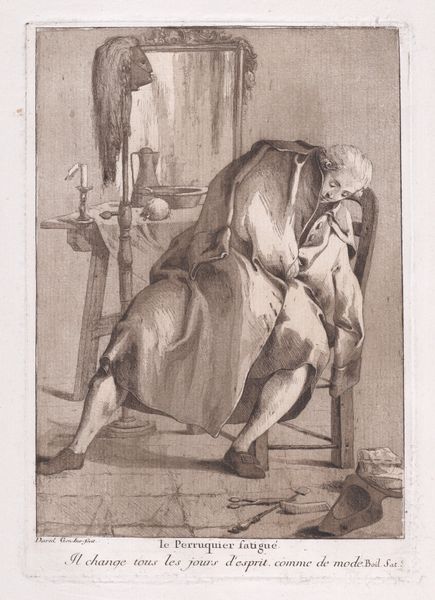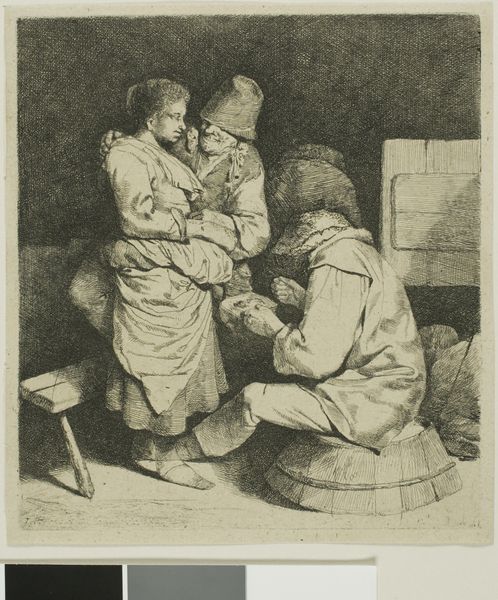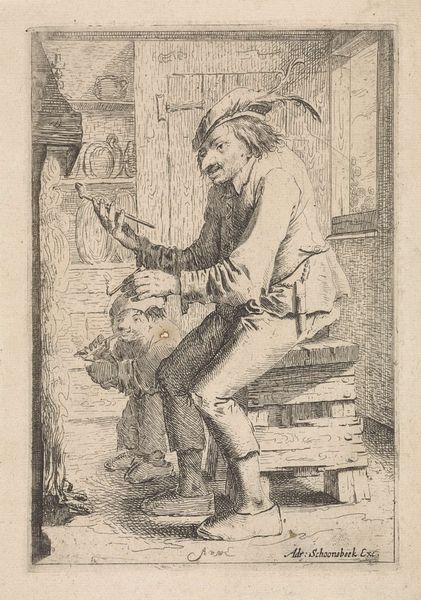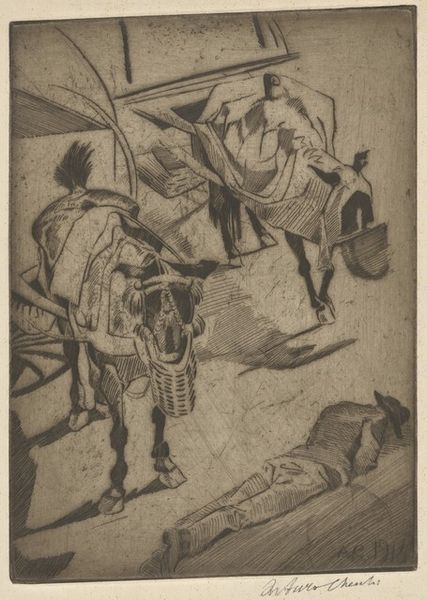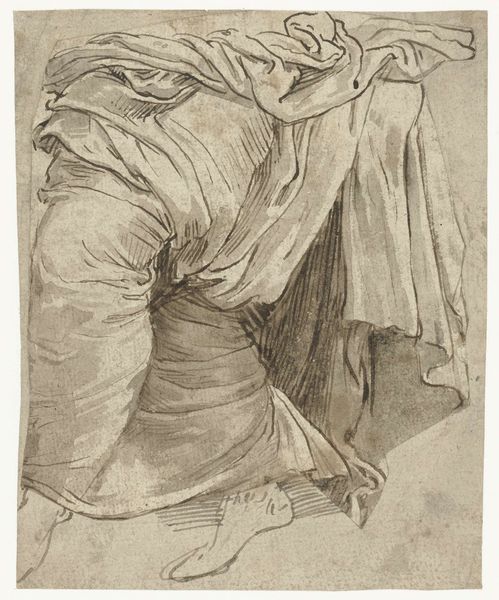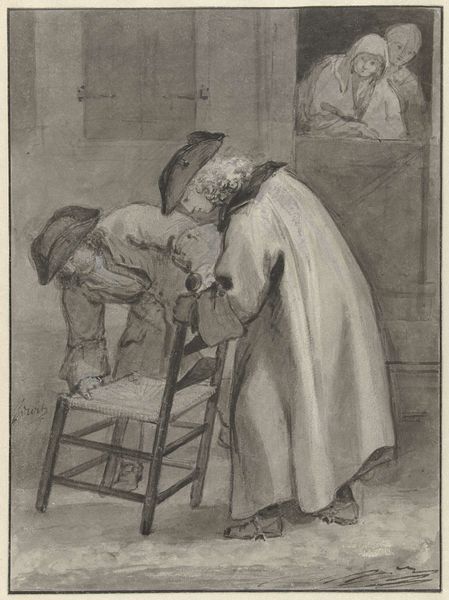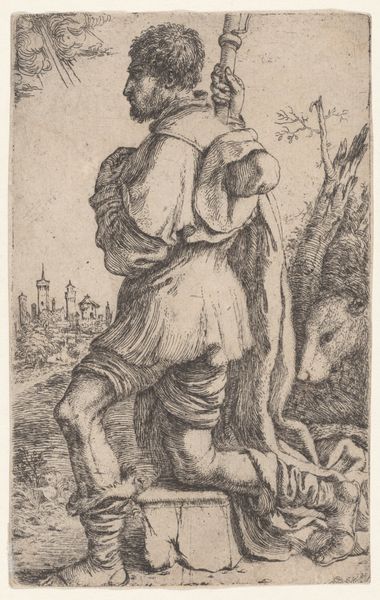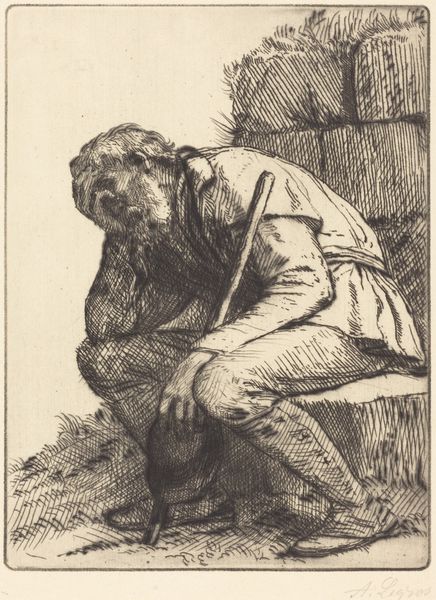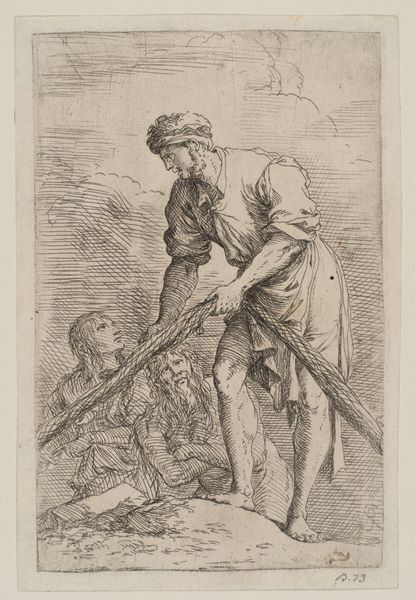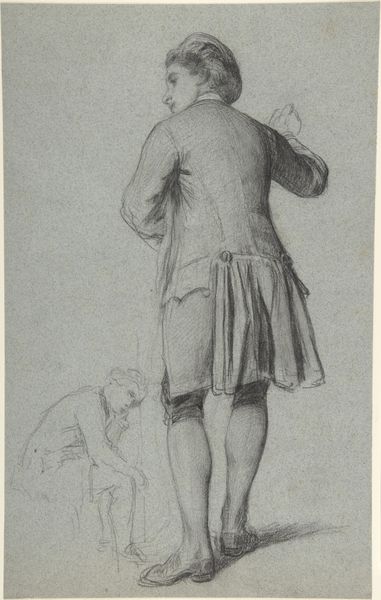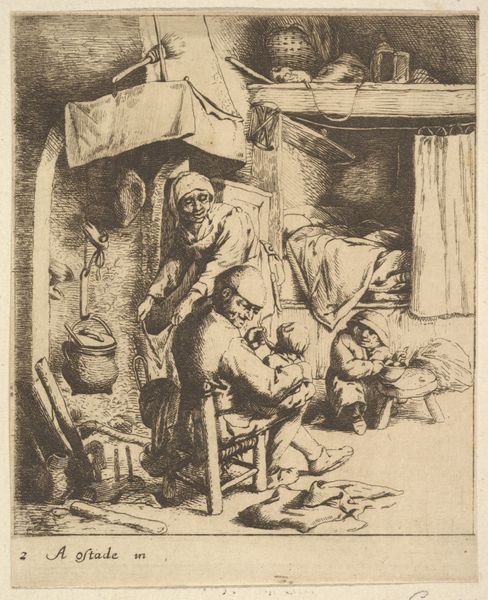
Dimensions: support: 343 x 241 mm
Copyright: © Estate of Stanley Spencer. All Rights Reserved 2014 / Bridgeman Art Library | CC-BY-NC-ND 4.0 DEED, Photo: Tate
Editor: Here we have Sir Stanley Spencer's "Jacob and Esau" from the Tate Collections. It has a very intimate, almost theatrical feel to it. How do you interpret this work, considering its biblical subject matter? Curator: Well, Spencer often situated biblical scenes within the context of everyday life and its politics. Notice how he renders Jacob and Esau in simple, almost coarse terms. Could this be a reflection on class dynamics within British society during the early 20th century? Editor: So, you're saying it's less about the religious narrative itself and more about using that narrative to comment on societal issues? Curator: Precisely! Spencer used religious imagery as a vehicle to explore contemporary social and cultural tensions, engaging the public in discussions around faith, class, and identity. Editor: That's fascinating; it gives me a whole new perspective on the piece. Curator: Indeed, art's power lies in its ability to provoke dialogue across different historical and cultural landscapes.
Comments
Join the conversation
Join millions of artists and users on Artera today and experience the ultimate creative platform.
tate 6 months ago
⋮
Made while Spencer was a student, this drawing shows the Old Testament story of rival brothers. The younger one, Jacob, plotted to become his father’s heir. He persuaded his older brother Esau to exchange his birth right for food when he was hungry. Jacob is likely the figure on the left. Behind him is the bowl of food with which he will tempt his brother. Spencer remembered making the drawing in the countryside near Cookham, while his eldest brother read the biblical story. Gallery label, October 2020
